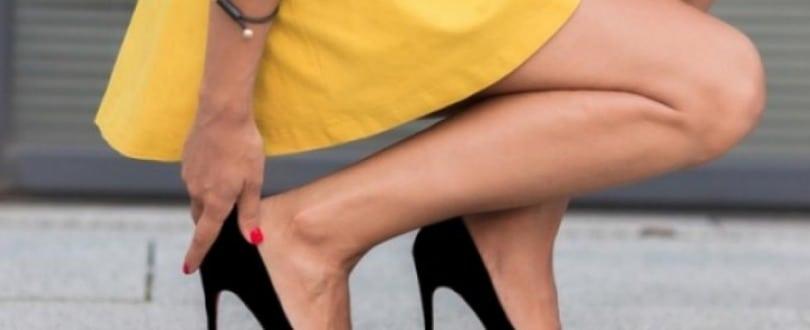
The health problems that high heels can cause are now widely known! The higher, meaning over 5 cm, the worse damage they cause. What can go wrong and which parts of the body are most affected? Most women complain mainly of severe pain in the leg, this is caused by the unnatural pressure that the front part of the leg has undergone and results in an increase in blood pressure at that particular point. Each step taken the pressure exerted on its structures is over 52%. Inevitably, the unnatural weight it puts on the toes and the ankle in general causes compression of the metatarsals triggering problems like huglunds deformity. Even excessive pressure can create calluses, blisters and more important conditions such as compression of the nerves between the fingers, in other words Morton's neuroma. Many times a single pain is found along the heel crossing the arch of the foot to the toes, then we may be dealing with plantar fasciitis syndrome. More generally, heels and rigid shoes make the foot suffer as joints, nerves, tendons, bones, the Achilles tendon and finally muscles are compressed.
The next discomfort or if you want the pain of the next day after our long hours of standing in heels is the pain in the lower back, i.e. in the middle!
This is due to the fact that when we stand on high heels, the curvature of the spine changes, the body posture changes, as a result of which specific muscles and joints are strained. By straining the musculature and changing the normal position of the muscles, some others work harder to replace the misaligned structures causing these muscles to become hypertonic. This continuous situation often leads to the creation of a trigger point. One of the most common wrong patterns that our heels create is the so-called lordosis. In addition, when our body gets used to this wrong pattern it is difficult to return to the previous state, engaging in a vicious cycle of pain, muscle spasm and general discomfort in our body. Don't forget that with our correct posture everything works perfectly, so forgetting the correct standing posture is most likely to end up on the ground!
Tight hip muscles and weak glutes form a posture where more weight is shifted to the front of the leg creating an issue in the foot as well. Obviously, accepting all these changes, the gait is no longer the same. The position the foot is in (excessive plantar flexion) is the least stable position making the joint more prone to injury. Our Gait is more unsteady with less forceful movement.
We must not forget that high heels can contribute to development knee pain that gradually leads to osteoarthritis. The muscle imbalances that exist, the forced pressure that the patella receives and the weights due to the continuous extension in which the knee is located are internal processes that lead to the world-famous osteoarthritis which manifests itself with a difference in percentage, mainly in women!
0H physical therapy helps to avoid the formation of calluses, to relieve the localized pain and in the static as well as in the walking phase.
۰Relief from the compression of nerves, muscles, tendons and the Achilles and prevention of serious conditions, such as Morton's neuroma, plantar fasciitis, problem in the metatarsals (huglunds deformity), Achilles tendinitis the most frequent reports.
Lower and back pain is difficult to avoid due to bad posture. Physiotherapy restores the normal pattern and stops the lordotic position so that the muscle imbalances are corrected resulting in less muscle pain, avoiding the creation of trigger points. Weak areas that are strained by poor posture are also strengthened.
۰From the moment we have a change in our center of gravity, more load is exerted on the front part of the leg and also on the knee. Instability is created in the ankle and internal pressures on the knee capable of creating osteoarthritis. The physical therapist will take care to restore the knee and avoid dangerous pressures as well as correct the center of gravity and completely eliminate discomfort or pain in the leg joint.
Physiopolis

No Comments